#Archibald Prize
Explore tagged Tumblr posts
Text
ARTWORK
Laura Jones
Sliding doors, 2024
Tim Winton, 2024
Sulman Prize 2024, Archibald Prize 2024. Art Gallery of New South Wales, Australia.



Self-portraiture allows me to capture moments of vulnerability and wonder in everyday settings. Sliding doors was painted at the start of a new relationship. I adopted the pose of Pierre Bonnard's wife, Marthe, in his 1932 work The bathroom. The mirror reflected the bedroom of my apartment. This equalised the image plane, allowing me to capture a familiar place - and body - from a different perspective. The small picture of domestic life collides with the big picture of the sublime.
In 2016, Laura Jones undertook an artist residency to study the bleaching of the Great Barrier Reef, leading to her exhibition Bleached. Afterwards, she met acclaimed author and conservationist Tim Winton at an environmental advocacy event.
‘I was amazed by the humility of this great novelist, who has enchanted generations of Australian readers,’ says Jones, a four-time Archibald finalist who is also in this year’s Sulman Prize.
‘Last year, I watched his ABC documentary, Ningaloo Nyinggulu, about the fight to save Ningaloo Reef. It was beautiful and terrifying. In a speech, Tim said the lack of action on climate change hasn’t been challenged enough in the arts. I was stunned to discover a portrait of Tim had never been a finalist in the Archibald Prize. Then I found out why – he was a reluctant subject,’ says Jones.
‘When I flew to Perth for a sitting, the Great Barrier Reef was suffering its fifth mass bleaching event in eight years. Tim was warm and witty. We spoke about the historical relationship between printmaking and political activism. I approached his portrait as if it was a monotype, using thin brushstrokes and letting the paint bleed across the canvas like ink into paper. Dreamy yet direct.’
What I connect with…
I love the colours and gestural strokes in Laura Jones’s work. Her Sulman entry captivated me as soon as I entered the space. The Archibald entry not so much, but both did show up the others around them. So beautiful and light and fresh.
#art#artwork#painting#art gallery of new south wales#Sulman Prize#Archibald Prize#Laura Jones#Tim Winton
3 notes
·
View notes
Text

Nora Heysen in her studio completing paintings which were commenced in New Guinea
#NoraHeysen, AM (11 Jan 1911 – 30 Dec 2003) was an Australian artist, the first woman to win the Archibald Prize in 1938 for portraiture and the first Australian woman appointed as an official war artist. Via Wikipedia
#Nora Heysen#in her studio#art by women#art#palianshow#women's art#women painters#australian#Australian artist#Archibald Prize#the first Australian woman#the first woman
1 note
·
View note
Text
A portrait of Yolngu rapper and ARIA winner Baker Boy by street artist Matt Adnate has taken out the 2024 Archibald Packing Room prize.
“Starting out as a street artist, I never dreamed I would win such an honour, I’m blown away." ~ Matt Adnate
#Archibald Prize#streetartist#bakerboy#mattadnate#portraits#ArtIndustry#Artists Are Essential#The Sydney Morning Herald#Art Gallery Of New South Wales
1 note
·
View note
Text

Matt Adnate, Rhythms of Heritage, Archibald 2024 Packing Room Prize winner
1 note
·
View note
Text
Tim Storrier's Histrionic Wayfarer
Renowned artist Tim Storrier is the winner of this year’s Archibald prize, Australia’s most famous art award, now in its 91st year. His winning work, called The Histrionic Wayfarer (After Bosch) is a self-portrait without a face and was inspired by a Hieronymus Bosch painting. Read more here.

View On WordPress
0 notes
Text
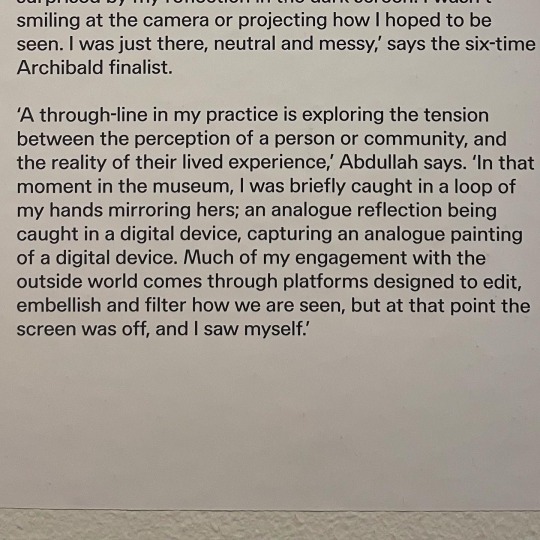
Abdul Abdullah, Archibald Prize 2023
0 notes
Text

Archibald Prize 2023 entry:
Barrambiyarra (Awaken)
by Luke Cornish
aerosol paint and acrylic on canvas
76.3 x 50.5 cm
Luke Cornish’s subject is Yvonne Weldon, a Wiradjuri woman and the City of Sydney’s first Aboriginal councillor. She is also an author, mother and ninna (grandmother).
‘For more than 30 years, Yvonne has worked in government and Aboriginal organisations, driving positive reform in social justice, child protection, education and housing. In 2022, she was recognised as a Member of the Order of Australia for her contribution to the community,’ says three-time Archibald finalist Cornish (also known as street artist E.L.K.).
‘I chose to paint Yvonne out of sheer respect. This portrait is inspired by the 2023 Sydney Festival’s Vigil: Awaken at which Yvonne welcomed everyone to Country. Held on the shoreline of Barangaroo Reserve, the vigil heralded the return of Me-Mel (formerly Goat Island) to its original custodians.
‘The painting encapsulates the spirit of First Nations peoples, motherhood and Mother Earth. The coolamon, traditionally used to carry water, fruit and nuts, and also cradle babies, is a vessel for burning leaves. Smoke is used ceremonially to cleanse and heal people, the land and waters. This ancient custom is shared today as a gesture of goodwill, bringing people together to promote healing.’
For the first time ever, there were more works by women (30) than men (27) in the Archibald finalists for 2023..
Across the three competitions – Archibald, Wynne and Sulman – the number of entries (101) and finalist works (38) by Aboriginal artists hits a new high.
#Barrambiyarra (Awaken)#Luke Cornish#Archibald Prize Entry 2023#art and soul#First Nations#First Nations peoples#motherhood#Mother Earth#Awaken#coolamon#smoke#ceremony#cleanse#Yvonne Weldon#Wiradjuri woman#Barrambiyarra#Barangaroo Reserve#vigil#original custodians#Me-Mel (formerly Goat Island)#Sydney Festival
1 note
·
View note
Text
Practicing digital art by trying out a new technique on a study of Young Sheenie.
Me: I don't know if it's I'm super baked or this is so fucking good it could go in the Archibald Fucking Prize.
@zaizai734 responds from the couch: I'm going to go with your super baked.
Thanks for the support, love!
Work in progress:

#michael sheen#fanart#baked#now that I come to think of it I think the subject of the Archibald needs to be an AUstralian#Is there a Welsh version of the Archibald prize because this is a legit entry rn
0 notes
Text
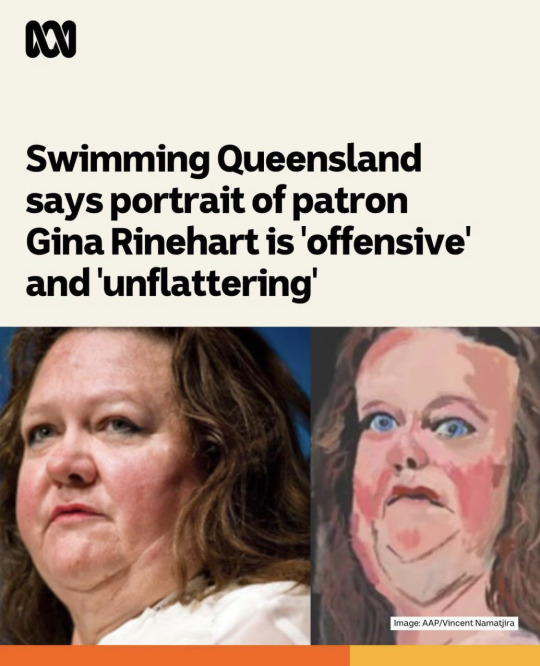
Sexypink - International Art news.. - Image against likeness.
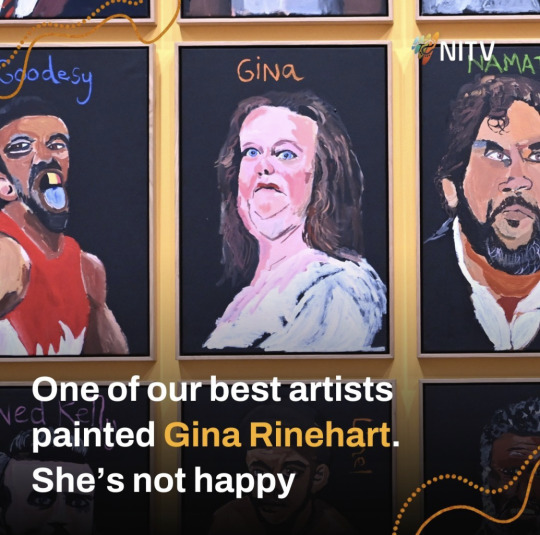


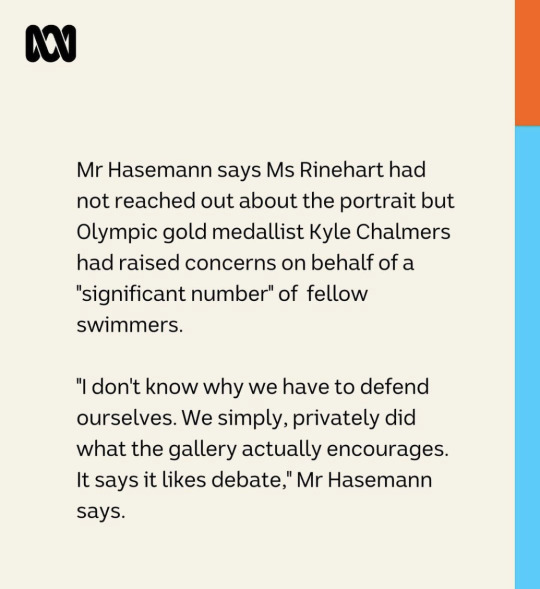
#sexypink/portraiture#sxypink/image and likeness#sexypink/ Gina Rinehart#archibald prize winner#national gallery#vincent namatjira#tumblr/ Vincent Namatjira#controversy#taste#likeness#caricature#portrait#Australia
0 notes
Text
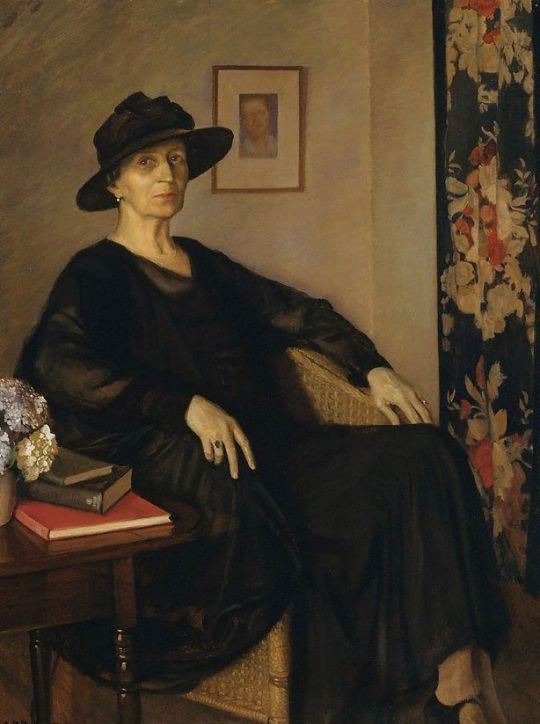
Miss Jeanie Ranken
Artist: Harold Abbott (Australian, 1906-1986)
Date: 1937
Medium: Oil on canvas
Collection: Art Gallery of New South Wales, Sydney, Australia
Miss Jeanie Ranken
This portrait of Miss Jeanie Ranken was runner up in the 1937 Archibald Prize, receiving the following praise from the Sydney Morning Herald art critic:
"… one of the younger artists has increased his scope and provided an impressive work. This is Harold Abbott's portrait of Miss Jeanie Ranken. The general effect is discriminating, not to say highly discreet. The figure has been displayed as an element in a piece of flat decoration. A parallel with well-known portraits by Whistler is unavoidable. But Mr Abbott's sense of colour is definitely his own. He uses his colours tenderly, yet with a keen sense of accent. The characteristic mien and appearance of the sitter, too, have been calmly and surely conveyed."
Visible on the wall behind the sitter is a small self portrait sketch of the artist painted in 1932 while Abbott was a student at the Royal Academy Schools, London. This self portrait is now in the collection of the National Gallery of Australia.
Miss Ranken was a Sydney journalist. In 1939 she was awarded The Order of the British Empire - Member (Civil).
#portrait#female#miss jeanie ranken#black dress#hat#seated#full length#oil on canvas#fine art#harold abbott#australian painter#journalist#table#books#vase#flowers#curtain#20th century painting#australian art#elegant
19 notes
·
View notes
Text










Guido Maestri, b 1974, Australian.
Winning the Archibald Prize as Guido Maestri did in 2009 would be a defining moment in most artists’ careers, but he is quick to cite physical immersion in the landscape as revolutionary to his painting practice. It’s easy to gloss over the history of plein-air as a European tradition, born of gentle grasses and mild sunlight. Practiced in Australia, away from the slip of green coastline, plein-air demands rigor of vast dimensions.
“All of a sudden there’s a freedom, a playfulness. I painted in one place for years — purposefully — then I got to a point when I was looking less and the paintings started to open up. I became more inventive with my palette — there’s no reference point in the studio, so my possibilities expanded. You can become a slave to the physical thing — once you let that go, anything can happen.”
https://www.janmurphygallery.com.au/.../guido.../profile/
22 notes
·
View notes
Text



Adam Archibald was born on 14th January 1879 at Leith.
Archibald was awarded the Victoria Croos for an act of bravery during Worlad War One near Ors, France.
Adam was the son of Rennie Archibald, a Plasterer, and Christina Archibald, of 24 Shaws Street, Edinburgh. He lived at 53 Balfour Street with his wife and four children, and before he joined the Army in 1916 he had been Outside Foreman with Stewart’s Granolithic Co Ltd of Duff Street. In his younger days he had been a keen footballer and had had a trial with St Bernard’s FC, an early Football club that rivalled Hibs and Hearts during the Victorian era. Adam aws also a bowler and at the time of his enlistment he had been President of the Eastfield Bowling Club. Another of his hobbies was gardening and he had won prizes at local flower shows.
He enlisted with the 7th Durham Light Infantry before transferring to the 218th Field Company, Royal Engineers during the second battle of the Sambre. At the age of 39, he was awarded the Victoria Cross for action while his unit was attempting to bridge the Sambre–Oise Canal.
On 4th November 1918 near Ors, France, Sapper Archibald was with a party building a floating bridge across the canal. He was foremost in the work under a very heavy artillery barrage and machine-gun fire. The latter was directed at him from a few yards distance while he was working on the cork floats. Nevertheless, he persevered in his task and his example and efforts were such that the bridge which was essential to the success of the operations was very quickly completed. Immediately afterwards Sapper Archibald collapsed from gas poisoning.
He received his Victoria Cross from King George V at Buckingham Palace in May 1919. After his discharge he returned to his job with Stuart’s Granolithic Works in Edinburgh, eventually rising to a position as manager of their Duff Street works. He passed away at his home in Leith on 10th March 1957 at the age of 76. He was cremated at Warriston Crematorium, Edinburgh. His name is on the memorial there. His medals are on display with those of Major Waters at the Royal Engineers Museum, Gillingham, Kent.
7 notes
·
View notes
Text
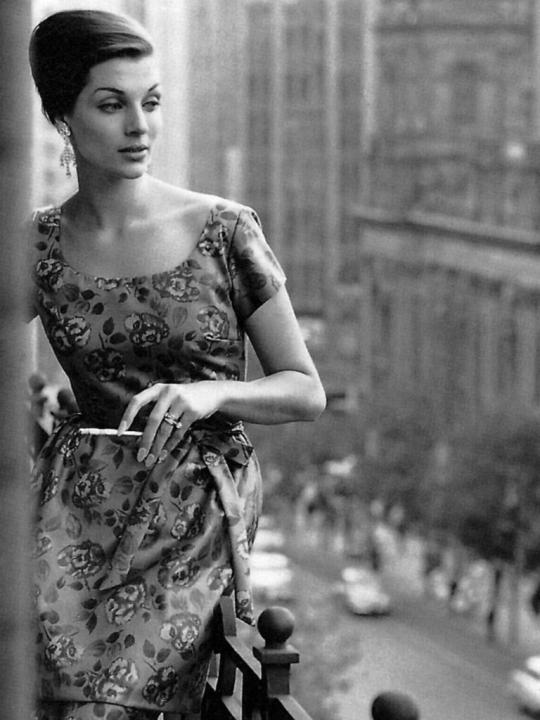
Maggie Tabberer
Vogue model who became the face of Australian fashion. The glamorous model also had successful careers as editor, TV presenter and fashion designer, bringing sophistication into Australian homes
Before Instagram influencers and reality show home renovators there was Maggie Tabberer, whose poise and urbane advice on fashion and decorating made her a household name. Known fondly as Maggie T, she has died just days before her 88th birthday.
Tabberer was, quite literally, the face of Australian fashion. Photographed by Lord Snowdon in 1960, she was the first local model to appear on the cover of just-launched Australian Vogue.
But there was much more to Tabberer than beauty.
She was a media pioneer, entrepreneur, fashion designer and television presenter. Her slicked-back hair – and later, elegant headscarves – made her instantly recognisable, and together with her stylish, loose-fitting wardrobe gave her cult-like status among a generation of Australian women brought up to believe you were naked without pantyhose and a girdle.
With a face that launched a thousand products, Tabberer continued to work in the fashion industry after her active modelling days were over. In 1981 she launched a plus-size clothing label, Maggie T, the same year she became fashion editor of the Australian Women’s Weekly where she stayed for 15 years. Television did not escape her sights – Tabberer was so successful she won back-to-back Gold Logies, in 1970 and 1971.
Margaret May Trigar was born in Adelaide on 11 December 1936, the youngest of Alfred and Molly’s five children. At 17, the rebellious teenager married Charles Tabberer, a 35-year-old car dealer, and by 21, she was the restless mother of two daughters, Amanda and Brooke. Walking past a modelling school one day, she signed up for classes and was an instant success. Soon Tabberer was working in Melbourne where she met and fell in love with the renowned German photographer Helmut Newton. Tabberer’s marriage broke down and she and Newton embarked on what she described as “a perfect, lovely” affair.
With her marriage over and Newton now living in Paris, Tabberer embraced new opportunities, moving to Sydney with her daughters. Here she met her second husband and great love, the Italian restaurateur Ettore Prossimo. The couple married in 1967, but later that year their 10-day-old son Francesco died from sudden infant death syndrome.
“You know, you live and go on doing what you’re doing, but you know you’re not joyous. There’s no joy for a long time,” Tabberer said in a 2011 interview.
Since 1964, Tabberer had been a panellist on Beauty and the Beast, a talkshow pitting the views of women against those of men. It was the ideal vehicle for audiences to appreciate the grace and good humour with which Tabberer dealt with her weight – and her sorrow – and in 1967 she was offered her own daily chatshow, Maggie.
Prossimo and Tabberer separated after 17 years of marriage, but reignited their friendship before his death in 1996. Throughout the 1980s, 1990s and 2000s Tabberer continued to appear on television in a range of lifestyle programs. She and her then-partner Richard Zachariah hosted The Home Show on the ABC from 1990 to 1995, when they split up. The couple never professed to be experts, but as they had renovated six of their own homes over six years they had plenty of experience.
Tabberer was made a member of the Order of Australia in 1998 for her services to the fashion industry. The artist Paul Newton twice entered his portraits of her into the Archibald prize, most recently in 2020. Her biography, Maggie, was published in 1999. Contemporary recognition for her contribution to Australian fashion eluded her; in 2019 she was nominated as an Australian fashion laureate, but ultimately overlooked.
In 2016, the happily single Tabberer came out of retirement to appear on the cover of the Weekly and share her thoughts on eight decades of life.
“At 80 I’ve come to my senses about men,” she said. “I’m not going to be getting into bed and taking my clothes off – don’t be ridiculous. I’ve still got a healthy ego.”
Maggie Tabberer was successful both in front of the camera and behind it, as well as in print journalism, design and marketing. Throughout her career, she successfully manoeuvred her personal brand, before anyone had put a name to that art.
Tabberer is survived by her daughters Amanda and Brooke and by her grandson Marco.
🔔 Maggie Tabberer: Born 11 December 1936, died 6 December 2024, aged 87.
Daily inspiration. Discover more photos at Just for Books…?
8 notes
·
View notes
Photo
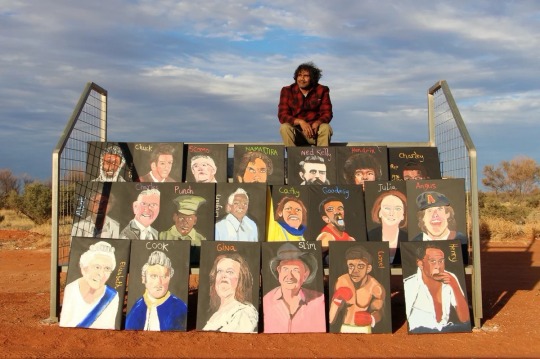
Billionaire Demands Portrait's Removal from Australia National Gallery
Gina Rinehart, the richest person in Australia, has reportedly called on Canberra’s National Gallery of Australia to take down a painting of her by Aboriginal artist Vincent Namatjira.
It wasn’t immediately clear what had moved Rinehart, a donor to the National Gallery of Australia, to make the request, but it was clear, at least, that Namatjira’s portrait was viewed as being not the kindest representation of her. Both the Guardian and the Sydney Morning Herald used the word “unflattering” to describe the picture, which renders her skin a pinkish color, exaggerates the folds on her chin, and turns her lips downward into a frown.
The painting is one of nearly two dozen portraits that appears in Namatjira’s current retrospective at the museum, which traveled the show from the Art Gallery of South Australia in Adelaide.
In Australia, Namatjira is well-known and much-loved. He became the first Indigenous artist to win the Archibald Prize, a prestigious Australian award for portraiture, in 2020.
Rinehart earned her fortune in the mining business and is currently chairwoman of Hancock Prospecting. She has periodically made national headlines in Australia for a string of controversies, most notably her decision in 2022 to stop funding a netball team after an Indigenous player asked not to have the Hancock Prospecting logo featured on her uniform.
According to the Sydney Morning Herald, in April, Rinehart personally asked NGA director Nick Mitzevich and NGA chair Ryan Stokes to deinstall the Namatjira portrait. The museum declined to do so. “The National Gallery welcomes the public having a dialogue on our collection and displays,” the museum said in a statement to the publication. ...
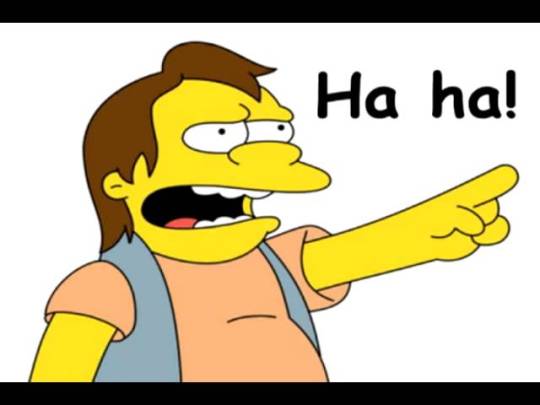
Her portrait is in the bottom row, 3rd from the L
#Vincent Namatjira#Arts#Native Art#Native Australians#Genius#godly#love#quality#HA HA!#EAT THE RICH#but marinate well#and keep antacid handy
18 notes
·
View notes
Text
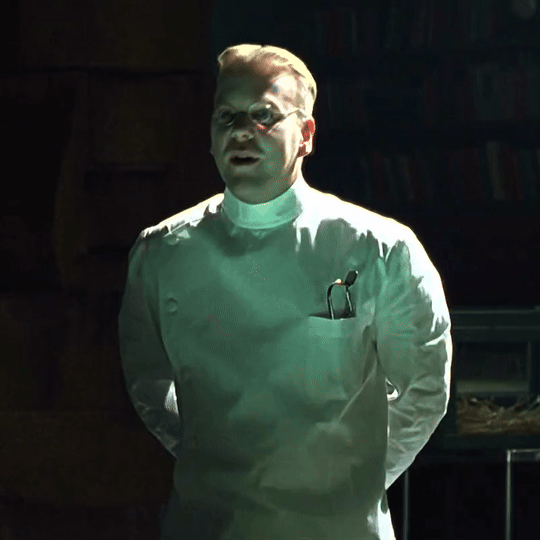
The Scientific Method
Part 1
Part 2
Part 3
It was hard to believe that Kat had only worked at Doctor Schreber’s office for about three weeks. It felt like she’d been there for years. Things were going well for her lately. She had a great new job, she could pay her rent and afford to eat on one paycheck, and she was even able to start paying down her debts. And her boss wasn’t a creep, finally, she couldn’t forget about that. Finally working for someone who seemed to actually respect her as a person had changed her for the better, and it showed in her outlook.
She’d even made friends with the Doctor’s little white lab rat, Archibald, who had made it a habit to announce her presence whenever she appeared at the door of the lab with an excited squeak. Bringing him a little treat with her lunch became a cute daily ritual, one that always brightened her mood.
Before she’d gotten this job, life hadn’t always been kind to her. She had no family, no friends to speak of, in the City or anywhere else. She was on her own. Usually she liked it that way, being on her own was what she knew, just getting by without the help of anyone else was how she lived. She’d been proud of making it on her own for the time that she had, before that last job threw it all in the gutter.
She had been walking absentmindedly for a few minutes, her mind wandering through these thoughts as easily as she wound through the streets of the City she’d grown up in. She was lost in thought when a man stepped in front of her, blocking her way out of the alley she’d been walking down. He was tall, heavyset but not fat, wearing a long duster coat and sporting a black fedora on his head.
“Where do you think you’re goin’ little lady?” He grinned, revealing a gold tooth on the right side of his mouth. He smelled as if he hadn’t bathed in several days and in that time had gone a bit overboard with the liquor, though these details she wouldn’t remember later to relay to the police, her panic sending her into fight or flight. Or freeze apparently because that’s all she’d done so far during this encounter. He slid behind her, an arm around her neck, and led her backwards into the shadow of the alley.
“I was just gonna rob ya, but now I think I’ll have a little fun while I’m at it.” He chuckled as she felt the blade of a small knife at her throat. She panicked at this, slamming her body backward into the man, throwing him off balance and freeing herself from his grip. She turned, kicking him hard in the groin before running away as fast as she could (faster than she thought she could, for that matter). She heard him grunt and hit the ground as she ran. She hoped she’d left the bastard with at least a nasty bruise for his trouble, she’d realize later she’d also left him her bag as a consolation prize, but at least she’d gotten away safely.
She was closer to work than she was home, so she went there, it was the only place she could think of to go, hoping the Doctor would be there. She didn’t want to be alone right now. The elevator attendant eyed her strangely as he pulled the lever to take them to the third floor.
“Bit late for you to be here, isn’t it?” he asked.
“Yeah.” She replied shortly before giving a nervous laugh. They’d arrived at the third floor. She got out of the car and thanked him.
“Well have a good night, little lady,” he said before disappearing into the floor.
His words sent a fresh wave of panic through her and she slid to the floor, back to the wall, while she attempted to catch her breath. The doctor must have heard the elevator door clanging on its way down, as he appeared at the door of his lab a moment later. He looked around, confused and a little worried as to who might be visiting him at this hour, expecting the worst.
Then he saw Kat, hunched over with her back against the wall. He rushed over to her, kneeling in front of her.
“Katherine, can you hear me?” a bit of panic tinged his voice as he spoke. He took her hands in his, they were cold. She was breathing rapidly and he felt as if he could hear her heart hammering. She was in shock. He gently helped her up and led her to the room where they’d conducted that first interview, helping her to sit down on the overstuffed leather couch and wrapping a worn blanket he’d found in his lab around her back. He pulled his chair up close and checked her pulse, it was slowing.
“Katherine, can you hear me?” he repeated after he’d situated her as comfortably as he could. She slowly looked up at him as if seeing him for the first time. She nodded.
“I can hear you,” she stated flatly, tiredly.
“Katherine, what happened?” he asked.
“I’m sorry, Doctor, I just… I didn’t know where else to go,” her voice was choked as if she were holding back a sob. “I just didn’t want to be alone.”
Gently he coaxed the story of what happened from her, his anger growing over what she’d been through that night. He wouldn’t let this happen again. Once she’d calmed down, he called the police. About a half hour later two officers finally showed up to take her account of what happened. He stayed with her while they questioned her, his hand on her shoulder and a protective eye on her.
After the ordeal was over and the police report filed, they found themselves alone again.
“I’m so sorry about this, Doctor, I’ll just-”
“Daniel.”
“I’m sorry?” “You can call me Daniel, Katherine.”
“I guess this means you should call me Kat,” she responded with a small, very tired smile.
Part 4
28 notes
·
View notes
Text
Prized
Masterpost | Read on Ao3
HAHA SURPRISE SECOND FIC
Based off of a roleplay between me and @crash-bump-bring-the-whump! Bastian belongs to him, and Archibald is a shared character of ours! This is also for @augusnippets Day 25 lmao
Contains: Intimate whump, captivity, dehumanization, drugging, restraint, misunderstanding of draconic pact brands
~~~
After a long, arduous day, Archibald likes to unwind in his gallery amidst his most prized possessions.
Today, for instance, he sits in the magnificent glass chamber he has had fashioned, cup of tea in hand as he idly traces the collarbone of the pretty little elf in his lap.
“I do find it interesting,” he muses to the dragon at his side. “I always heard that dragons bonded to their mates. Some sort of pact. And yet there is no mark on this one.”
The dragon only snarls at him. Archibald smiles, just a bit; he likes the fire the dragon shows. A sharp contrast to the listlessness of the elf; a study in opposites, they are. He puts the cup down so he can free his hand to lift the dragon’s chin. Admires the black teeth and pearlescent scales as the dragon snaps at him with a growl, only to be blocked by the black iron muzzle around his face. His hand drifts lower, to the swirling mark on the dragon’s chest, and traces it just as delicately as he had the elf’s bare skin.
Even with this light contact, he can feel the strength beneath the dragon’s skin, can feel the rumble of anger in the dragon’s chest. The elf reacts too, a slight furrowing of the brow, a slight noise of protest.
Archibald smiles. Presses down harder, just to feel the thrum of the dragon’s heartbeat through the mark on his skin. The dragon snaps at him again, but between the muzzle and the chains and the drugs, Archibald knows he poses no threat. “Or perhaps you are connected. But if that were the case,” and he traces the same spot on the elf, making the elf’s breath catch, “Then you really ought to match, don’t you think?”
“You—“ There’s something of confusion under the rage in the dragon’s voice, by Archibald pays it no mind. Why would he? He’s already making plans.
“Yes, I think that would be most wonderful.”
#flicker in the dark#flicker in the dark side stories#silly writes#whump#whump writing#dragon of the deepest forge#elze'ith sylrel oc#archibald the collector#intimate whump#captivity#restraint#dehumanization#drugging#augusnippets day 25
9 notes
·
View notes